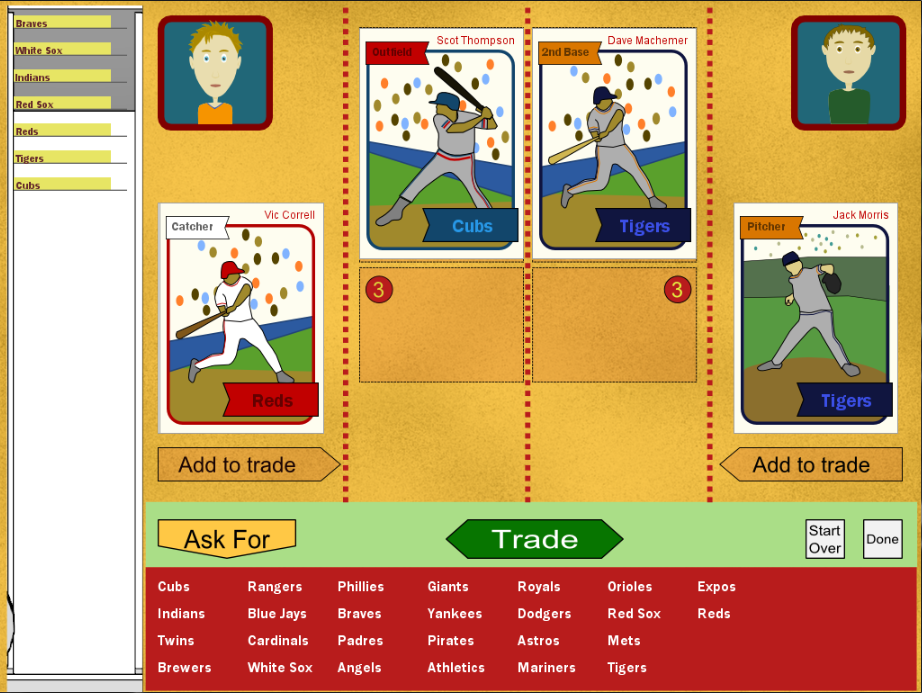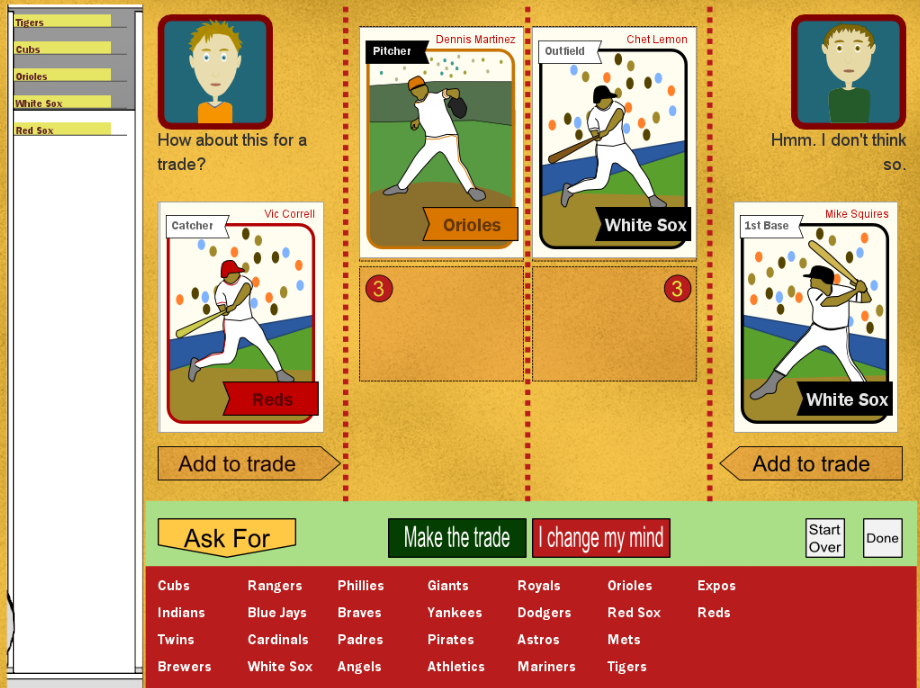The core of Waxpack Summer is trading cards. Currently, the game only supports trading with NPCs, so I had to devise a system that would make trading with the computer somewhat realistic. As I continue to build the game, these algorithms can surely be tweaked and improved, but for now, I just wanted to get the basics working.
It all starts with how a card set is generated. At the start of the game, after the player selects a summer to play, the game brings in all of the team and player data. Each player's card is created and given a scarcity level. Right now, this is how that level is assigned:
Batters
Batting average from .000 to .249 = Common
Batting average from .250 to .349 = Uncommon
Batting average greater than .349 = Rare
Pitchers
Earned run average greater than 3.25 = Common
Earned run average from 2.50 to 3.25 = Uncommon
Earned run average less than 2.50 = Rare
Players get cards by purchasing them at the store with money earned from mowing lawns. Each pack is randomly generated, taking into account the scarcity levels.
Now we are to the point where we want to trade cards with an NPC. What I've done, in order to give the NPC an easy way to determine if they want to make the trade or not is to assign a "trade weight". Different factors of the trade alter the trade weight (initially set to 0) either positively or negatively. In the end, if the trade weight is greater than 0, the NPC will make the trade. If not, he will refuse the trade.
Here are the trade weight adjusters:
Is the player offering more cards than he is requesting? +1 per additional card
Does the friend already have the card the player is offering? -1
Does the friend need the card the player is offering? +1
Total the scarcity levels for each side's offer using the following:
Common = 0
Uncommon = 1
Rare = 2
If the player is offering less total scarcity than the friend, subtract the difference.If the player is offering more total scarcity than the friend, add the difference.
Let's see this in action.
You can see here that I'm offering Dennis Martinez to my friend in return for Chet Lemon. Martinez is a 3.66 ERA pitcher and Lemon is a .318 batter. Using the weight adjusters, the friend doesn't like the trade.
Now you can see I sweetened the deal by also throwing in a Vic Correll card. Now my friend accepts the trade.
So, as I've mentioned, this is a pretty basic method for handling the AI functions for trading. Obviously there are a few flaws that need to be fixed. For example, I'm only looking at the last year's stats for the player. If it's a superstar card, but the player had an off year last year, he would still command a high demand.
I welcome any suggestions any of you may have on what would make a stronger algorithm to determine if a trade would be made or not. This is something that I can continuously improve and it is an interesting challenge. I hope you enjoyed this look at how the trading functions work at this point, and I look forward to hearing from you.




